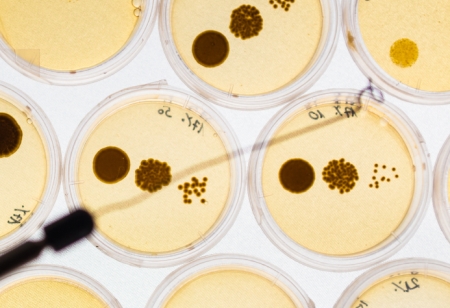Control your Controls

Is your biological material what you think it is? It's crucial you find out, writes Julie E Russell
The Biologist Vol 60(5) p11
Scientists on the whole are careful when selecting the instruments, kits and reagents in their research or test procedures. But many seem to overlook the importance of sourcing and controlling their control strains and biological test materials.
In 2010 I ran a study on behalf of Public Health England (PHE) to look at control strains used in food microbiology testing laboratories. Eight laboratories volunteered, all with excellent reputations and all accredited by the United Kingdom Accreditation Service (UKAS), to a challenging international standard.
We asked the labs to send us the control strains that they used routinely in their tests for four commonly encountered food-borne pathogenic micro-organisms: Bacillus cereus, Listeria monocytogenes, Salmonella Nottingham and Staphylococcus aureus. The results of our analysis were compelling[1].
All eight laboratories reported that their control strain for S.aureus was NCTC 6571, also known as the 'Oxford Staphylococcus'. However, DNA analyses carried out in our own laboratories indicated clearly that six of the eight labs were actually using a different strain. Most of the volunteer laboratories had obtained their strains from a long-established bioresource – the National Collection of Type Cultures (NCTC). However, in some cases, the strain was bought more than 10 years ago. In others there were no recorded details of when it was bought, how it was stored or how many times it had been subcultured (passaged) – even though it is well established that frequent subculture of bacterial strains may cause genetic mutations and phenotypic changes.
One worker asked us: "Does it matter that we have the wrong strain?" The impact depends, to a degree, on the type of test being undertaken, but it can invalidate results. For example, in 2001 a group of scientists in Scotland were studying BSE transmission in sheep brains. After three years' work, last-minute DNA tests showed they had spent all that time analysing results from cow brains instead. Not only were their results invalidated, but the story was published in the national press so reputations were tarnished. Incorrect biological materials mattered significantly in this case[2].
The lack of attention when sourcing and controlling control strains and biological test material may partly be caused by the perception that new, authenticated products are expensive (more than £50 for an NCTC culture). Yet the cost implications of this oversight can be huge, as are the implications of reporting misleading results or reaching unfounded conclusions, or even advising inappropriate treatments.
Many countries have national bioresource centres; some of the more established centres have global distribution networks providing authenticated, characterised biological materials. PHE operates a unique biological resource, consisting of four collections of cell lines (tissue cultures) and micro-organisms, and used worldwide as controls for diagnostic tests.
Nevertheless, there is still much to be done to convince scientists of the benefits of investing in authenticated materials from culture collections. PHE can of course advise on best practice for the procurement and storage of biological resources.
References/ links
1. onlinelibrary.wiley.com/doi/10.1111/j.1574-6968.2011.02320.x/abstract
2. www.independent.co.uk/news/science/how-did-top-scientists-mix-up-brains-from-cattle-and-sheep-631979.html
Julie E Russell CBiol MSB has been head of Public Health England’s Culture Collections since April 2012. Prior to that, she was head of PHE food and water proficiency testing schemes for microbiology.


